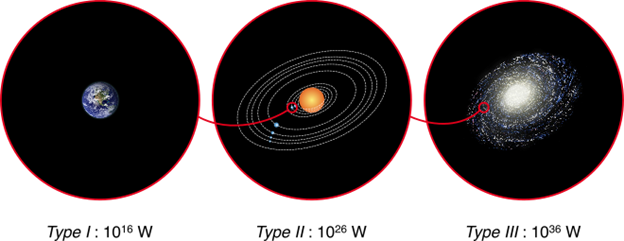Our place in the Universe
By Hethu NanayakkaraMost of us have looked in to the night sky and wondered how many stars are out there. On a clear night sky, we see about 2,500 stars with our naked eye. Our Milky Way galaxy has about 400 billion stars, so we are seeing just a faction of our galaxy in the night sky.
Scientists believe that here are about 10 billion galaxies in the observable universe! The number of stars in a galaxy varies, but assuming an average of 100 billion stars per galaxy means that there are about 1,000,000,000,000,000,000,000 (that’s 1 billion trillion) stars in the observable universe.
To understand the massive scale of the observable universe, watch this Google Cosmic Eye video: https://youtu.be/8Are9dDbW24
(note that the zooming is not in a linear scale but in an exponential scale)
Intelligent life
Now an interesting question is, how many of those stars would have a planet capable of having intelligent life? “Intelligent life” means some advanced species that can ask similar questions to what we just asked. On planet Earth, this is only us, Humans. No other life on Earth is comparable to humans and is intelligent enough to ponder such big questions.
We can only comprehend “intelligent life” as we know it on Earth. Assuming that for intelligent life we need planetary conditions similar to our Earth, we first need to figure out the number of “Sun-like” stars out there (similar in size, temperature and luminosity) and come up with the probability of such solar systems having habitable planets that can support intelligent life.
Without going in to details, doing the math with the most conservative estimates, this comes to 10 quadrillion, or 10 million billion intelligent civilizations in the observable universe. Just within our neighborhood, in our Milky Way Galaxy we end up with 1 billion Earth-like planets and 100,000 intelligent civilizations.
But we haven’t seen any. So where is everybody?
The Fermi Paradox
Fermi Paradox states the apparent contradiction between high estimates of the probability of the existence of extraterrestrial civilizations and the lack of evidence for such civilizations.
SETI (Search for Extraterrestrial Intelligence) program is dedicated to listening for signals from other intelligent life. If we’re right that there are 100,000 or so intelligent civilizations in our galaxy, and even a fraction of them are sending out radio waves or laser beams or other modes of attempting to contact others, SETI’s satellite dishes should have picked up something. But so far, they have not. This is the Fermi Paradox.
Plenty of time to Evolve
Our sun is relatively young in the lifespan of the universe. There are far older stars with far older Earth-like planets, which should in theory mean civilizations far more advanced than our own.
For example, if we compare our 4.54-billion-year-old Earth to a hypothetical 8-billion-year-old Planet X, that planet would be 3.4 billion years ahead of us.
The technology and knowledge of a civilization only 1,000 years ahead of us could be as shocking to us as our world today would be to a medieval person. A civilization 1 million years ahead of us might be as incomprehensible to us as human culture is to chimpanzees. Our example Planet X is 3.4 billion years ahead of us! Imagine what it could achieve in that time.
Given enough time, intelligent civilizations would figure out technology to harness the power of their own planet, then their host star and finally their host galaxy.
Kardashev scale
The Kardashev scale is a method of measuring a civilization’s level of technological advancement based on the amount of energy a civilization is able to use. The scale has three designated categories:
-
Type I civilization—also called a planetary civilization—can use and store all of the energy available on its planet (we humans are about 0.7 in this scale – we have not reached Type I yet)
-
Type II civilization—also called a stellar civilization—can harness the total energy of its planet’s parent star
-
Type III civilization—also called a galactic civilization—can control energy on the scale of its entire host galaxy

Given enough time, scientists think that most intelligent civilizations would move from Type I to Type II and ultimately to Type III. But we don’t see any Type II or III civilizations roaming in our skies, so where is everybody?
Where Are They?
Some explanations might sound like science fiction, in fact most of what follows have already been taken as the basis for sci-fi books and movies. We do not have evidence to prove the explanations, but what follows are based on logical reasoning.
Where is everyone? There are two broad possibilities:
Possibility 1: There are no signs of higher civilizations because there are no higher civilizations in existence.
-
Maybe we are a rare species and are the very first to come this far, and we are on our way to Type I and beyond. Probably there are others, but we are ahead in this race.
-
Maybe just like us, other civilizations are still on their way to Type I and beyond, but no one has managed to become advanced enough to contact us (yet).
-
Maybe no one reaches Type II or III. Somehow due to catastrophic cosmic events, all civilizations get wiped out before they get a chance to reach those states.
Possibility 2: Type II and III intelligent civilizations are out there — and there are logical reasons why we might not have heard from them.
- Super-intelligent life could very well have already visited Earth, but before we were here. Humans have lived only a fraction of the time in the lifespan of Earth. Besides, we only have recorded history of around 5000 years and that is a tiny time-slice in the earth’s timeline to witness an alien encounter.

Earth’s timeline mapped to 24-hours. Humans arrived in the last 77 seconds
.
-
There’s plenty of activity and noise out there, but our technology is too primitive and we’re listening for the wrong things.
-
There are scary predator civilizations out there, and most intelligent life knows better than to broadcast any outgoing signals and advertise their location. So, everyone keeps quiet and stays low-key.

-
There’s only one instance of higher-intelligent life—a “superpredator” civilization (like humans are here on Earth)—that is far more advanced than everyone else and keeps it that way by exterminating all other intelligent civilizations that may become a threat to them. This certainly is not good news for us!
-
The galaxy has been colonized and there is plenty of activity, but we just live in some isolated rural area of the galaxy. Maybe we just happen to be in an uninteresting, boring area of the galaxy.
-
Higher civilizations are aware of us and observing us (AKA the “Zoo Hypothesis”). Perhaps we are at a protected galactic park and are classified as some endangered species. We may be part of a research and is being monitored.
-
We’re completely wrong about our reality. Maybe our notion of time and space is completely wrong. Maybe we are not perceiving the universe correctly and our understanding and reasoning is way off. We may well be just a computer simulation.
Universe is a big place with many mysteries and unknowns. Through millions of years of evolution, humans have become intelligent enough to ask big questions about our existence and question about other intelligent civilizations in the universe. We still don’t have all the answers, but we have some very good guesses. We have got stuck at the Fermi Paradox, but we are still trying to find our place in the universe.
References:
https://en.wikipedia.org/wiki/Fermi_paradox

